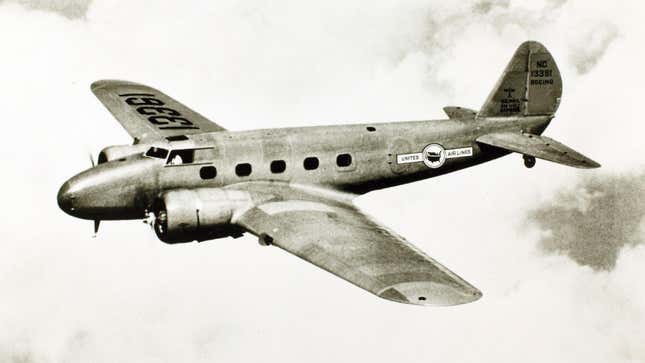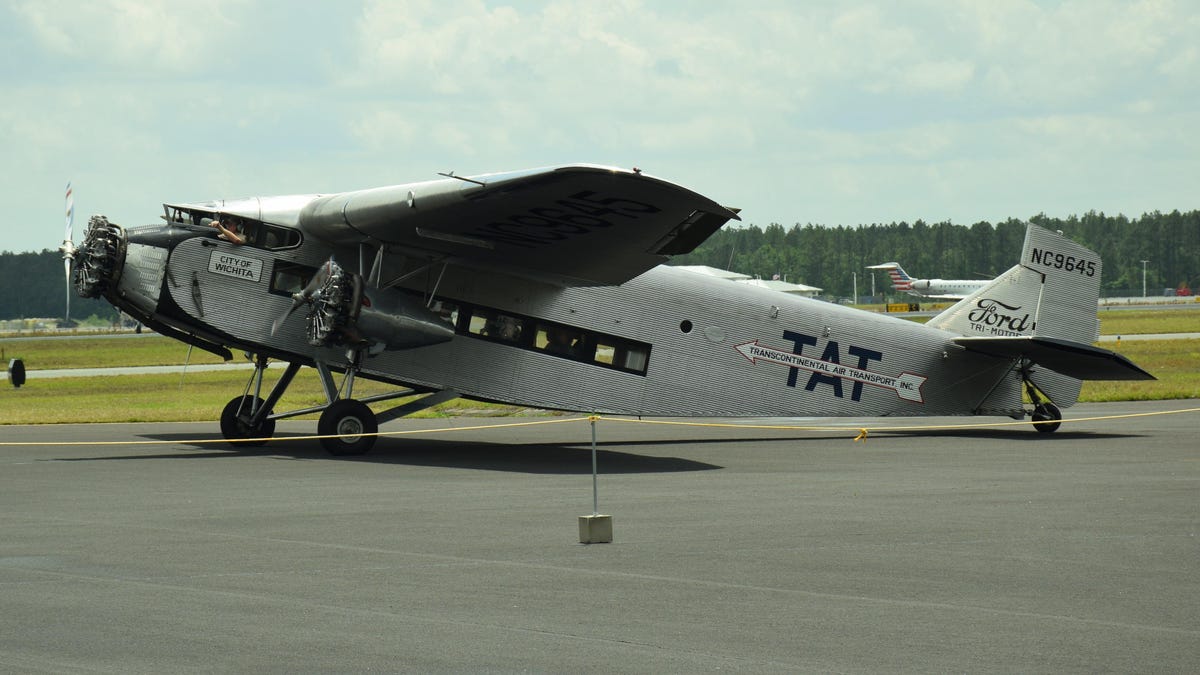Ford is synonymous with the automobile because the Model T revolutionized car travel in the United States. It’s difficult to believe that the Ford Trimotor plane did the same in commercial aviation. This is an understandable oversight, considering it’s the only plane ever designed and produced by Ford’s short-lived aviation division before burning $10.3 million.
Ford didn’t take off from scratch but took over an existing venture. William Stout, a Minnesota-raised engineer, had ambitions to build America’s first plane of all-metal construction during the 1920s. By this point, most planes were still built around the wood frames, the domain of daring pilots and not wealthy travelers.
Stout had the expertise to accomplish the innovative feat, but he was short on cash. He launched a fundraising campaign asking for $1,000 each from Detroit’s circle of industrialists, garnering the attention of Henry Ford. The automotive magnate was passionate about the project and wanted to invest more, but Stout wouldn’t relent on his initial offer. According to “The Saga of the Tin Goose” by David A Weiss, Ford the Elder spoke with the press after his investment became public. He said:
“Aviation will come of age when planes are commercially developed. And I can foresee the days when they will be built in the thousands… Airplanes will be more effective than autos in wiping out misunderstandings between people, because they will reduce distances in the world. They can even work for peace, because when they become popular they will put power in the people’s hands… and make short work of the warmongers.”
Let me correct myself. Passionate is an understatement when describing Henry Ford’s interest in aviation. He was likely only more zealous about being racist. Ford Airport in Dearborn, Michigan, the first modern airport, was built specifically for Stout in 1924. Ford also granted adjoining land to the Stout Metal Airplane Company to build its factory. The automaker would launch the Ford Air Transport Service, the first cargo airline, in 1925 with an inaugural flight between Dearborn and its factory in Chicago using Stout’s single-engine 2-AT plane. To Ford, commercial aviation was the future, and the world needed to know it.

Ford took the ultimate step later that year, buying the planemaker outright and installing Edsel as President of the new Stout Metal Airplane Division of the Ford Motor Company. William Stout remained as a division director. The aircraft manufacturer was working on the 2-AT successor at the time, an underpowered triple-engine prototype that couldn’t fly faster than 60 miles per hour. Conveniently, the 3-AT prototype and the entire Stout factory were destroyed in a fire and the division had the opportunity to rework the unimpressive trimotor design.
The Ford Trimotor (or 4-AT) featured William Stout’s all-metal construction, visibly apparent in the corrugated skin covering the wings and fuselage. The ridged exterior reduced drag and improved structural strength. The aircraft was fitted with three 200-horsepower Wright J-4 radial engines, two mounted on the wings and one on the nose. The triple-engine layout allowed the plane to continue flying if one engine failed. Impressively, the Trimotor could cruise at an unmatched 107 mph when it debuted in 1926.
The Trimotor quickly garnered a reputation for being affordable, rugged and reliable because of the plane’s design and its ties to Ford. The plane would get the Tin Goose nickname as a nod to the Model T’s Tin Lizzie moniker. This unsurprisingly appealed to the federal government, the financier of lowest bidders from sea to shining sea. The Ford Motor Company convinced the United States Post Office to award the company the first commercial airmail contract.

Other fledgling carriers bought Ford Trimotors and followed suit. Pan Am started on an airmail contract between Key West, Florida and Havana, Cuba in 1927. Transcontinental Air Transport used the expertise and fame of aviator Charles Lindbergh to establish a national airmail network. The carrier would merge with Western Air Express in 1930 and be known by its initials for the rest of its existence, TWA.
Nearly every legacy U.S. carrier during the Jet Age would fly the Trimotor during this formative period when including American Airlines, Eastern Air Lines and Northwest Airways. Delta Air Lines is the glaring exception because it wasn’t an established carrier until after the Trimotor’s demise. Varney Air Lines, a predecessor to William Boeing’s United Airlines, generated nearly a million dollars annually from airmail contracts. The government was indirectly subsidizing passenger air travel through airmail contracts, keeping the nascent industry financially viable.
The Ford Trimotor sales figures show the plane’s meteoric rise and fall over its last full six years in production:
– 1927: 15 planes
– 1928: 36 planes
– 1929: 86 planes
– 1930: 26 planes
– 1931: 21 planes
– 1932: 3 planes
Production of the Ford Trimotor ended in 1933 with 199 planes built in total. In “Beyond The Model T,” Ford Bryan explained that “the sales staff blamed much of the business failure on Ford’s reluctance to streamline the plane further and install more powerful engines for a higher cruising speed.” This is in addition to the Great Depression shrinking the aviation market.
It didn’t help sales that Ford couldn’t export the Trimotor to Europe due to court injunctions over patent infringement claims from German planemaker Junkers. The German planes featured the same corrugated skin before Stout’s designs and were operated in the United States, leaving open the possibility that the idea was stolen.

The sales staff were right. The Ford Trimotor literally couldn’t keep up with the competition. The planes that usurped the Tin Goose were twin-engined aircraft with low-slung wings that wouldn’t look out of place in today’s skies. The Boeing 247 took its maiden flight in 1933. The airliner with two 500-hp Pratt & Whitney R-1340 Wasp engines and the weight benefit of one less engine had a cruising speed of 189 mph. McDonnell-Douglas DC-3 debuted three years later with a cruising speed over 200 mph. Ford also shuttered in the Stout Metal Airplane Division in 1936.
All-in-all, Ford lost $10.3 million across the airplane division, Ford Airport and the Ford Air Transport Service. The Ford Trimotor was the cutting edge of aviation when it debuted, but the industry’s relentless pace of development quickly rendered it obsolete.
The project was somehow an ideological victory for Henry Ford. The Trimotor kickstarted the future he envisioned to the point where Ford Motor Company briefly returned to aviation during World War II, building over 8,600 B-24 bombers at Willow Run for Consolidated Aircraft and the War Department.

